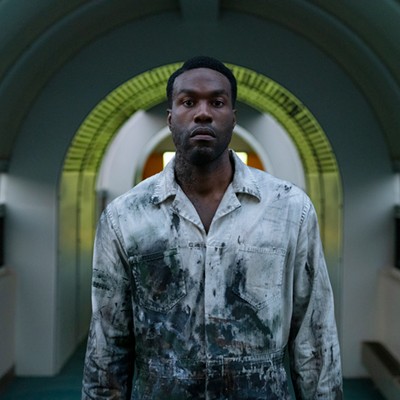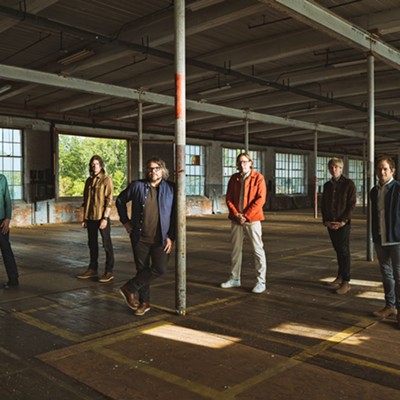They call him The Condor.
Mat Hoffman has pushed farther and further to ride harder and fly higher, and he's logged more time in the sky than any other athlete.
Hoffman didn't invent BMX; he pioneered it. He redefined bicycle riding, pedaling from sideshow to arena sport.
His history and legacy is explored in "The Birth of Big Air," a documentary that screens for free 9:30 p.m. tonight, kicking off the 10th annual deadCENTER Film Festival in downtown Oklahoma City.
The film was directed by "Jackass" director Jeff Tremaine and produced by Spike Jonze and Johnny Knoxville. "Big Air" is part of ESPN's "30 for 30" documentary series, which explores athletes and issues that have that have shaped sports during the cable network's three-decade run.
"Birth" starts with renowned riders like Bob Haro, Dave Mirra and Chad Kagy, who cite Hoffman's influence in the sport's infancy in the mid-1980s, when BMX was really just a "trick-riding" exhibition and sideline entertainment to skateboarding.
Hoffman wasn't like any other rider. He was young, just 13 when he started, and seemed to emerge onto the exhibition circuit from the alt-sports ether of Edmond.
Pushing hard, Hoffman started racking up wins at competitions and turned pro well before his 18th birthday. He eschewed the intricate, ground-level stunts of his peers in favor of big, sweeping movements. He invented scores of tricks along the way, but his biggest talent was his enthusiastic and unrelenting pursuit of what seemed impossible.
Although Hoffman's name quickly became synonymous with BMX, no one really knew him. He would disappear for a while and rumors of what he might doing back in Oklahoma would circulate among other riders.
Knoxville was part of an ESPN production team that was shooting commercials in the 1990s. On one cross-country expedition, he said he was told the crew would be stopping by Oklahoma City to see Hoffman.
"They were talking about him in hushed tones," Knoxville said from Los Angeles, as he and Tremaine took a break from the set of "Jackass 3-D." "That was 14, 15 years ago, and I still talk about Mat in hushed tones. He blew my mind then and he just continues to do that."
"The Birth of Big Air" is a visceral viewing. But while soaring jumps and stylish cycle trickery are central to the story, Tremaine's lens lingers on the faces of those testifying. Hoffman's story is a compelling study in contrasts " contradictions, even. While the BMX legend's signature is bigger, faster and wilder, his persona is often very much the opposite.
In fact, his quietest contributions to the sport might be the most significant.
"BMX could have easily died. Mat basically shouldered it," Tremaine said, recalling an early-'90s recession that felled finances from the sport, leading to shuttered events, BMX company bankruptcies and dwindling public interest. The film documents Hoffman's response, which was to hit the road and do things himself, organizing and financing his own "Sprocket Jockeys" exhibition team that played 96 shows a year at fairs and festivals across the country.
Some fellow riders have another nickname for Hoffman the Condor: "Rambo."
Ingenuity and injury are a big part of "Big Air," and the two often ride hand in hand. The bar is pushed higher, and Hoffman falls harder. Two comas, 21 bones, 23 surgeries, 100-plus concussions and 300-plus stitches worth, by the film's estimation.
As the ramps get bigger, mistakes become far costlier. When Hoffman's imagination exceeds the speed at which he can pedal, his response is to have a motorcycle tow him down a ramshackle runway into an enormous ramp he and some friends hand-nailed in some nondescript Oklahoma field.
And while he is able to shrug off the most-cringing injuries, his family and friends don't recover so quickly. Emerging from an on-and-off coma sans spleen, "Big Air" shows Hoffman struggling with big decisions and expectations that he constantly progress.
"I push myself because I don't believe anyone knows what a human's limit is, and I'm interested in challenging that," Hoffman told Oklahoma Gazette. "It's something you have to find yourself And when you think you do, that's when you pick yourself up and pass on through it. You create your own limits, and what wasn't possible today may be tomorrow. Being able to keep getting up is my award."
When Tremaine started shooting "Big Air," there was worry that Hoffman might never ride his bike again. In October 2007, Hoffman said he was almost killed when a semi ran a stop sign at 50 mph and "T-boned" his car.
"My shoulder is partially paralyzed. I was told I would never be able to ride my bike again," Hoffman said. "This time, I believed my doctor."
Hoffman is back on the bike, but "I'll never be 'back,'" he said, noting that he'll put on his shoulder brace and ride when "there's karma that demands my spirit to roll in and go big." "Joe Wertz












